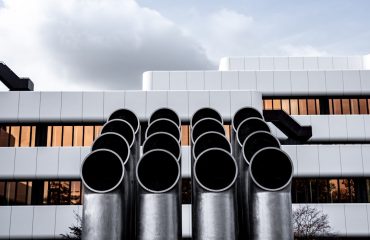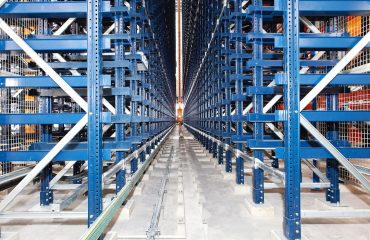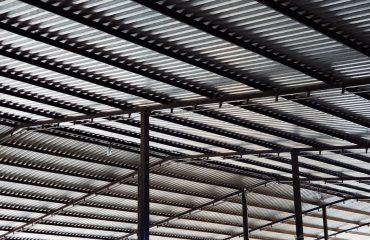The steel industry, a cornerstone of global infrastructure and manufacturing, is constantly evolving. Understanding the latest sector news and trends is crucial for businesses, investors, and policymakers alike. This in-depth analysis explores the key factors shaping the future of steel.
Global Steel Production: A Rollercoaster Ride
Global steel production has experienced significant fluctuations in recent years. Factors such as economic growth in emerging markets, infrastructure development projects, and government policies have all played a role. For example, the surge in construction activity in Asia has consistently driven demand, while economic downturns in other regions have led to decreased production. We’ve seen a noticeable impact from the ongoing global supply chain disruptions, leading to shortages of raw materials and increased production costs. Furthermore, the increasing focus on sustainable steel production is influencing the methods employed, potentially impacting overall output in the short term, but promising long-term benefits. Monitoring the production figures from key steel-producing nations like China, India, and the United States is critical for understanding the overall health of the industry. Analysis of these figures, coupled with forecasts from industry experts, provides a vital roadmap for future trends.
The Volatility of Steel Prices: A Market in Flux
Steel prices are notoriously volatile, influenced by a complex interplay of supply and demand, raw material costs (primarily iron ore and coal), energy prices, and geopolitical events. Recent years have witnessed dramatic price swings, driven by factors such as unexpected economic slowdowns, trade wars, and pandemic-related disruptions. The price of iron ore, a key raw material, has a significant impact on the final cost of steel. Fluctuations in the price of iron ore, often tied to Chinese demand, directly translate into price changes for steel products. Moreover, government policies, including tariffs and subsidies, can significantly influence steel prices within specific regions. Understanding these interconnected factors is essential for businesses involved in steel production, processing, and distribution to effectively manage risk and optimize pricing strategies. Careful monitoring of commodity markets and geopolitical developments is crucial for predicting future price movements.
Sustainability in Steel: A Growing Imperative
The steel industry is increasingly under pressure to reduce its environmental impact. The production of steel is a carbon-intensive process, contributing significantly to greenhouse gas emissions. However, there’s a growing movement towards sustainable steel production, driven by both environmental concerns and increasing regulatory pressure. This includes initiatives focusing on reducing carbon emissions through the use of alternative energy sources, improving energy efficiency in steel mills, and developing innovative steelmaking processes with lower carbon footprints. The development and adoption of green steel technologies, such as hydrogen-based steelmaking, are crucial in meeting sustainability goals. Furthermore, the increasing demand for recycled steel is helping to reduce the industry’s reliance on virgin materials, contributing to a more circular economy. Investors and consumers are increasingly demanding sustainable steel products, driving innovation and investment in greener technologies.
Technological Advancements: Shaping the Future of Steel
Technological advancements are transforming the steel industry, improving efficiency, enhancing product quality, and enabling the production of advanced steel grades with specialized properties. The adoption of automation and robotics in steel mills is increasing productivity and reducing labor costs. Advanced analytics and data-driven decision-making are improving operational efficiency and optimizing resource allocation. Furthermore, the development of new steel alloys with enhanced strength, durability, and corrosion resistance is opening up new applications in various sectors, including aerospace, automotive, and construction. The integration of artificial intelligence (AI) and machine learning (ML) is further revolutionizing the industry, enabling predictive maintenance, process optimization, and improved quality control. Companies that embrace these technological advancements will be better positioned to compete in the evolving steel market.
Geopolitical Landscape and its Influence on Steel
Geopolitical events have a profound impact on the steel industry. Trade wars, sanctions, and political instability can disrupt supply chains, impact steel prices, and influence investment decisions. Changes in government policies, such as tariffs and subsidies, can significantly affect the competitiveness of steel producers in different countries. For instance, trade disputes between major steel-producing nations can lead to increased protectionist measures, impacting global trade flows and steel prices. Furthermore, political instability in key raw material-producing regions can disrupt supply chains and lead to price volatility. Understanding the geopolitical landscape and its potential impact on the steel industry is crucial for businesses and investors to navigate the complexities of the global market. Staying informed about international relations and government policies is paramount for making informed strategic decisions.
The steel industry is a dynamic and complex sector, subject to a multitude of interconnected factors. By understanding the latest news and trends, businesses and stakeholders can better navigate the challenges and opportunities that lie ahead.
SEO-Friendly Tags:
- Steel Industry News
- Steel Market Trends
- Steel Prices Forecast
- Sustainable Steel Production
- Steel Technology Advancements




